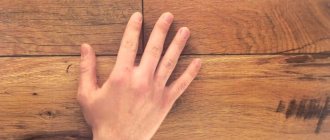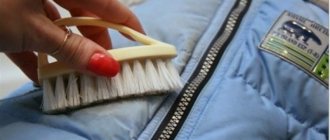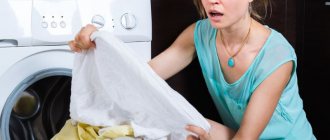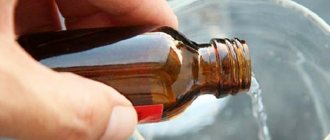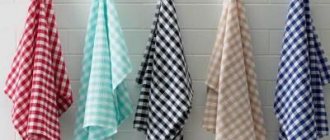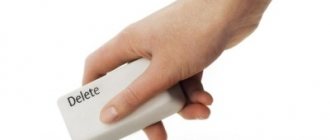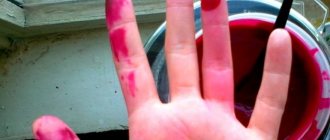Frosted glass looks elegant, original and beautiful; it is most often used to decorate furniture, interior doors, and shower cabins. But this decorative element pleases the eye only if it is kept in perfect order. How to clean frosted glass efficiently, without harming it and restoring its attractive appearance?
Causes of pollution
Reasons for frequent contamination of frosted glass surfaces include:
- Dried drops of water during water procedures, if the glass is in the bathroom.
- Soot and grease settling on matte surfaces of furniture and kitchens.
- Remains of street dirt and exhaust gases, if it is placed on a balcony or loggia.
- Dust settling in living rooms, children's rooms or bedrooms.
Cleaning frosted glass is not an easy task. In its production, the top layer is treated with a special compound, which gives the glass a dull appearance and an uneven texture. Detergents containing abrasive components can simply destroy this coating. Scrapers and newspaper cannot cope with dirt. This problem can only be solved using gentle means.
What to pay attention to
Caring for frosted glass has its own specifics, and before choosing a product to wash the insert, you need to make sure that it is not its plastic counterpart. In appearance they are almost identical, but in properties they are not. And what is good for one material may well harm another. The simplest testing is done like this; if you lightly hit the panel with a metal object, and the sound will be clear - silicate glass, only frosted; more deaf - a polymer-based substitute (plexiglass, plexiglass).
Not all preparations are suitable for washing matte inserts. Products that contain:
- organic solvents;
- alkalis or acids;
- gasoline, even aviation gasoline;
- abrasive components. As an example, detergents and tooth powders. And even more so various brushes and scrapers.
So that after washing the frosted glass there are no streaks on it, it must be wiped dry immediately. If moisture remains on the surface, then after it evaporates, characteristic “patterns” will certainly appear.
In most cases, even the best preparation does not help to clean glass from dried drops of grease. A good solution is to soften this layer; then it can be easily removed with a damp cloth. At home, you can use a steam cleaner (suction mode) or a modern iron with this function.
Ordinary starch gives the characteristic shine to frosted glass; it is diluted at the rate of a tablespoon/liter and used to wipe the insert. After this treatment, dust and dirt will not stick to it, and your fingers will not be imprinted. It is advisable to practice weekly.
It turns out that choosing a product for cleaning frosted glass is not so difficult. It remains to add that if you regularly monitor the condition of the doors, you won’t have to waste time looking for medications and cleaning the panels. In this regard, the advice is simple - you need to wipe the inserts daily with a soft cloth, preferably velvet or suede. And then frosted glass will always look perfect.
How to avoid
It's no secret that cleaning glass is a tedious and time-consuming process, especially in those places where contamination occurs most often. While ordinary glossy glass can be protected from corrosive stains with a special film, it cannot be used on matte surfaces.
In this case, you can create an artificial homemade protective layer. The recipe for preparing the composition is very simple: mix water (50 ml), ammonia (5 drops), glycerin (100 ml). Mix all components thoroughly and treat the surface with this composition. There is no need to wipe with a dry cloth; let the surface dry naturally.
Rules of care
Cleaning glass is a tedious and time-consuming process. Maintenance of frosted glass must be correct. Some recommendations must be followed to avoid surface damage.
How to care for glass:
- A solution of glycerin and alcohol made in a ratio of 20:1 will help prevent fogging.
- Remove dust frequently with a microfiber, suede or wool cloth. To keep it from sitting down longer, add a few drops of essential oil.
- Do not press on the surface.
- Wipe with light circular movements on both sides.
- To prevent streaks from remaining on the surface after using detergent, it is necessary to rinse the glass with cold water and immediately remove excess moisture.
- To keep the surface clean longer, treat it with car polish.
- Do not allow sunlight to come into contact with wet sandblasting. When exposed to ultraviolet rays, the surface becomes dull.
- Do not touch frosted glass with your hands. There will certainly be greasy fingerprints on them.
- Do not allow surfaces to dry out on their own. There will be divorces.
- After cleaning, rinse with vinegar solution. It disinfects surfaces. After such cleaning, the treated inserts will remain clean longer.
How and with what to clean
The technology for washing matte surfaces is simple if you approach the problem correctly and strictly follow the cleaning rules:
- First you need to determine the degree and type of contamination in order to know which product to choose to clean stains and wash the entire surface.
- Moisten the frosted glass with water and leave it at rest for a few minutes.
- Choose the appropriate material for the job: suede scrap material, soft fabric or microfiber.
- Apply a small amount of the selected detergent to a rag and treat the surface according to the instructions for it.
- To remove stains, if they remain and are clearly visible, you must first wipe the surface with a slightly damp cloth, and then with a dry soft cloth.
Grease stains on frosted glass can be removed using the following methods:
- Chalk composition - for a glass of water you will need at least three tablespoons of chalk. Mix everything and treat greasy stains with the mixture.
- Ammonia-water solution - a spoonful of ammonia is needed per liter of water. Moisten the stain, let it sit for a while, rinse with water, and wipe dry.
- Water-vinegar mixture - for 200 ml of water (one glass) you will need a spoon of acetic acid. The procedure for removing contamination is similar.
- Detergent for cleaning windows (for regular cleaning). It is better to treat fresh stains with these compounds.
The above solutions are effective; they cope well with stains. Apply directly to the stain (the more generously, the better, but without much effort). If necessary, repeat the procedure several times in a row.
Old, ingrained fat can be removed with acetone, ammonia or alcohol. Stains from coffee, office glue, and tea can also be washed off with acetone.
Industrial detergents
No less effective at removing stains on frosted glass:
- Laundry soap. A piece of the bar is grated on a coarse grater. The resulting shavings are mixed with warm water. The solution is suitable for routine wet cleaning. Works well on dirt and fresh greasy stains.
- Dishwashing liquid. Like soap, it is used to clean simple stains and pre-wash frosted glass. It is applied to a damp cloth or the soft side of a sponge, and then to the surface.
- Glass products. Compositions containing ammonia or isopropyl alcohol will also clean matte surfaces. For routine cleaning and removal of recently appeared stains, for example, “Mr. Muscle”, “Clin”, “Help” are suitable. A more serious problem will be solved by “Fratty Cleaner”, “IKeep!”.
Household chemicals to help
If complex traces of contamination appear on the surfaces, you can try to solve the problem with special means:
- Mister Muscle
- AJAX
- Clin
- PRIL
- Help
- Cif
- Ecover
- Second for window glass
First, you should thoroughly treat the stain (wetting it generously), then rinse with water (not hot, preferably at room temperature), wipe well with a dry cloth, thereby removing excess moisture to avoid the formation of streaks. It is advisable to moisten the dried stain and give it a little time to swell.
When working with greasy stains, you should first work on the stain itself, and then wash the entire surface of the glass.
Then it will be easier to clean it. A good result can be achieved if the stain is removed with a rubber spatula; you can also use suede to treat windows.
What should you absolutely not wash frosted glass with?
This type of glass has a specific surface that appears as a result of sandblasting or acid treatment of the glass. The rough texture is very sensitive to the influence of aggressive agents, so treatment of such glasses should be completely avoided:
- strong abrasive compounds and materials;
- products that contain silicone, any acids or alkalis;
- hard (metal) scrapers and spatulas.
- Strong solvents and detergents.
The use of these products may damage the coating layer on the glass.
Store formulations
"Mister Muscle"
Just the name of a detergent often brings a smile, so tired of annoying advertising. But if you look through thematic forums and analyze the reviews of housewives, then most people prefer this cleaning product. This is one of the best options for removing dirt from frosted glass.
But "Mr. Muscle" is effective if the panel is only slightly dirty. It is powerless against a layer of dirt and oil stains. And the expense of funds turns out to be large; Taking into account the cost, use in such cases is hardly advisable.
"PRIL", "Ajax"
These products are great for cleaning glass stained with grease. It is enough to moisten the base with water, “walk” several times with a soft cloth (napkin), and it will quickly acquire its original appearance.
Detergents
There are enough “chemicals” to clean dishes: sprays, gels. They can be used to remove dirt from glass. Effective for combating adhering dust, drips and stains. These compounds will also easily rid the surface of “greasy” fingerprints.
Alcohol-containing products
They are considered one of the best for cleaning frosted glass. Literally everything is removed - drops of fat, traces of coffee (juice, tea), glue, mastic, putty and so on. But drugs in this group should be used with caution.
- Paneled doors from different manufacturers differ in the way the inserts are attached and the materials used to seal the gaps. Alcohol corrodes silicone seals (gaskets), and if they are the ones that are installed, you should choose a different detergent.
- It is important what exactly is diluted in alcohol. Some preparations leave streaks and stains on the base after drying. And while this is not critical for most surfaces, it matters for frosted glass. Before use, you should drop the product somewhere in the corner of the panel and see what remains on it after the alcohol evaporates. If the test result is positive, you can safely wash it.
Required tools and materials
You need to choose the right tools for cleaning frosted glass. Allowed to use in work:
- Means and compositions for cleaning windows and glass surfaces;
- soft rags;
- microfiber cloths;
- plastic or rubber spatula;
- soap-water solution;
- acetone, ammonia, vinegar, chalk and alcohol;
- alcohol-based solvents.
Homemade chemicals and solutions will help you get rid of grease stains and more, without much effort. Before using them in your work, you should carefully read the instructions and the list of surfaces to be treated. Strictly follow the dosage and application rules. It must be remembered that frosted glass has a coating layer and is very easy to damage.
You can try to remove old stubborn stains with a steam cleaner, setting it to the “Continuous suction” mode. Dishwashing detergents do not contain abrasive components; they can also be used at work.
Except for those that contain acid, for example “San Klin” or “Shumanit”.
Folk recipes
There are several folk remedies that will help clean the matte surface on glass.
Ammonia
The most popular cleaning agent for coated glass is ammonia. It is used to prepare a detergent that effectively fights almost any stain. To prepare the solution, add 10 milliliters of ammonia to a liter of water. The mixture is sprayed with a spray bottle and rubbed with a cloth. After this, the wiped coating is washed with cold water.
Vinegar 9%
Experts advise using vinegar liquid to clean glass. It will help get rid of ordinary dust and wipe away stubborn greasy stains. To prepare the solution, add a tablespoon of apple cider vinegar to a glass of water. Then soak a rag in the solution and wipe the door with it. To prevent the coating from smelling like vinegar, it is washed again with soapy water.
Baking and soda ash
Sometimes vinegar and ammonia do not help clean the surface of the glass from dirt and you have to use soda ash and baking soda. It is added to water in a ratio of one to five, after which the matte product is treated with the soda mixture. You can also not dissolve the soda, but simply rub it into the surface, rinse with water and wipe with a dry towel.
Powdered chalk or starch
If there is a lot of dirt on the glass surface, you can use starch or chalk powder from which a cleaning solution is prepared. To do this, add 45 grams of the substance to 500 milliliters of water, after which the liquid is thoroughly mixed. Then soak a cloth in a container with the mixture and wipe the glass with it. Remains of chalk are wiped off with a regular dry sponge or rag.
Denatured alcohol, vodka and cologne
An effective means for cleaning dirt can be prepared from cologne, regular vodka and denatured alcohol. All components are mixed in equal quantities. Then the liquid is evenly applied to the dirty surface and left for 10-15 minutes to soak in the dirt. After this, use a rag soaked in water to wipe off the remaining dirty marks.
Potassium permangantsovka
To combat old stains, you can use a manganese solution. When preparing such an effective manganese mixture, 55 grams of manganese are added to a liter of boiled water. The solution is stirred until it turns a dark reddish color. Moisten a sponge in the prepared liquid and wipe the surface of the door glass with it.
Steam
Sometimes people don't want to use cleaning fluids, so they steam the frosted glass instead. For this, a special steam generator is used, which not only removes dirt, but also degreases the door. Steaming should last for five minutes. Then wipe the cleaned surface with a dry cloth to remove any remaining moisture.


